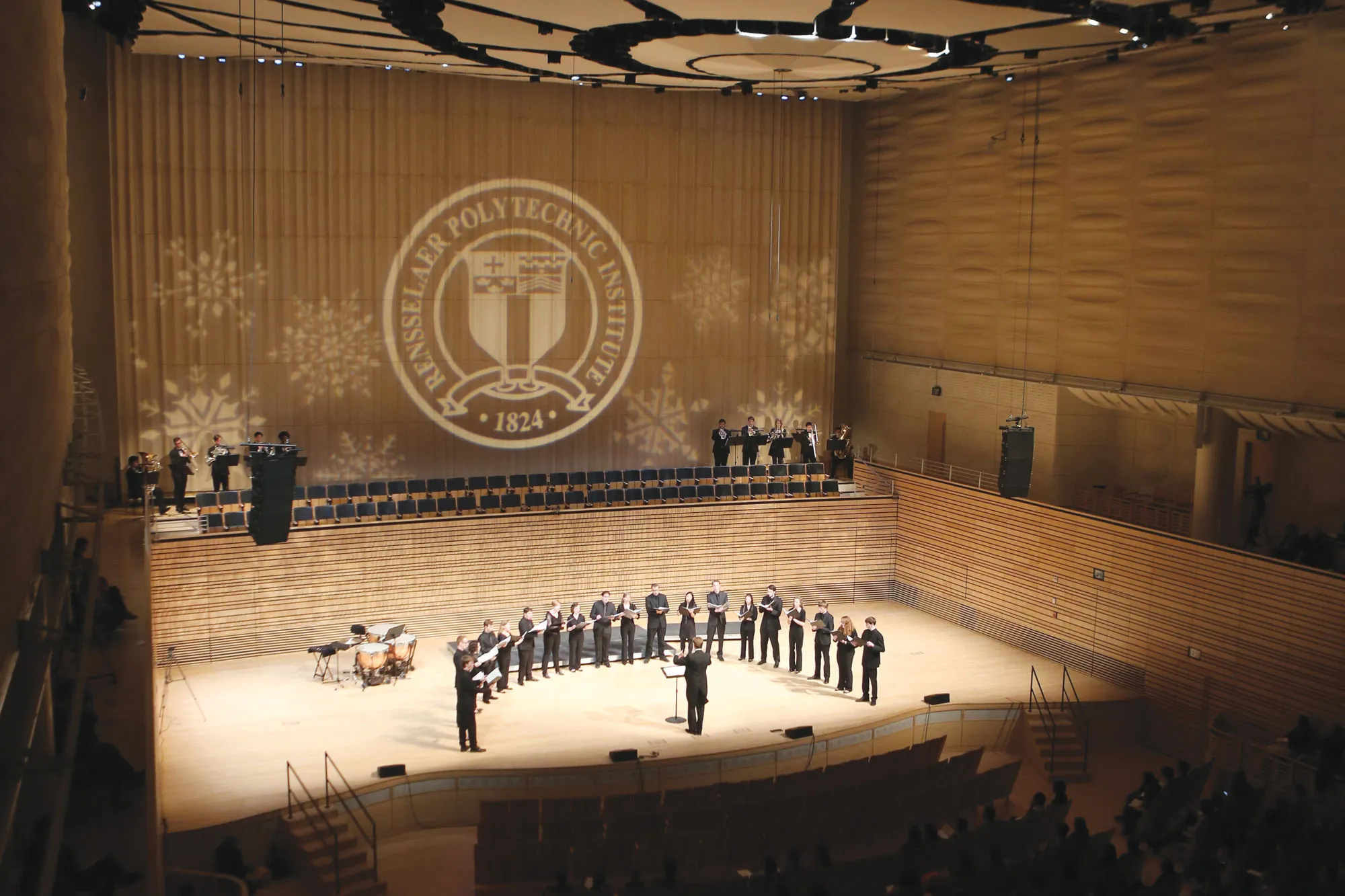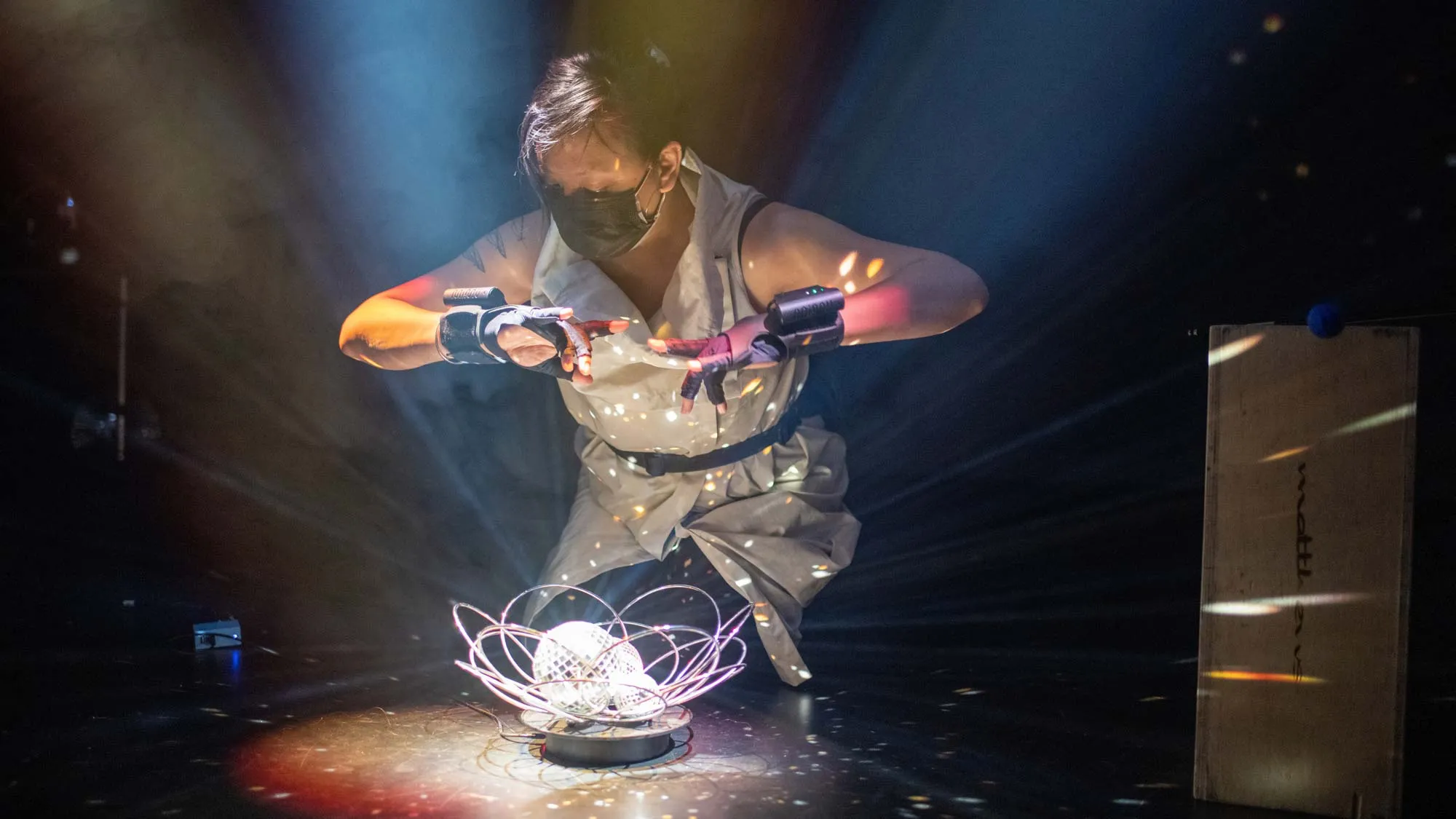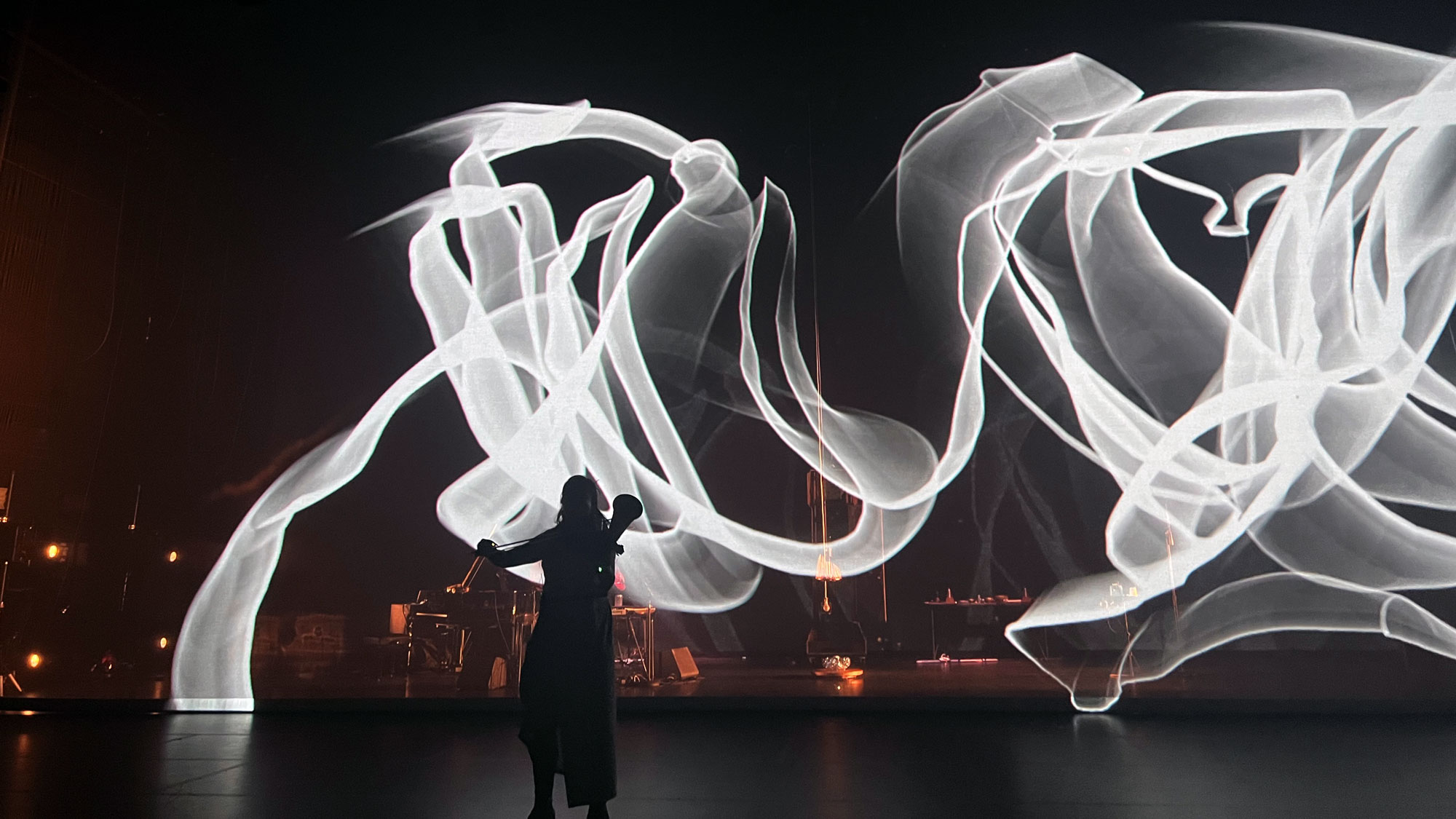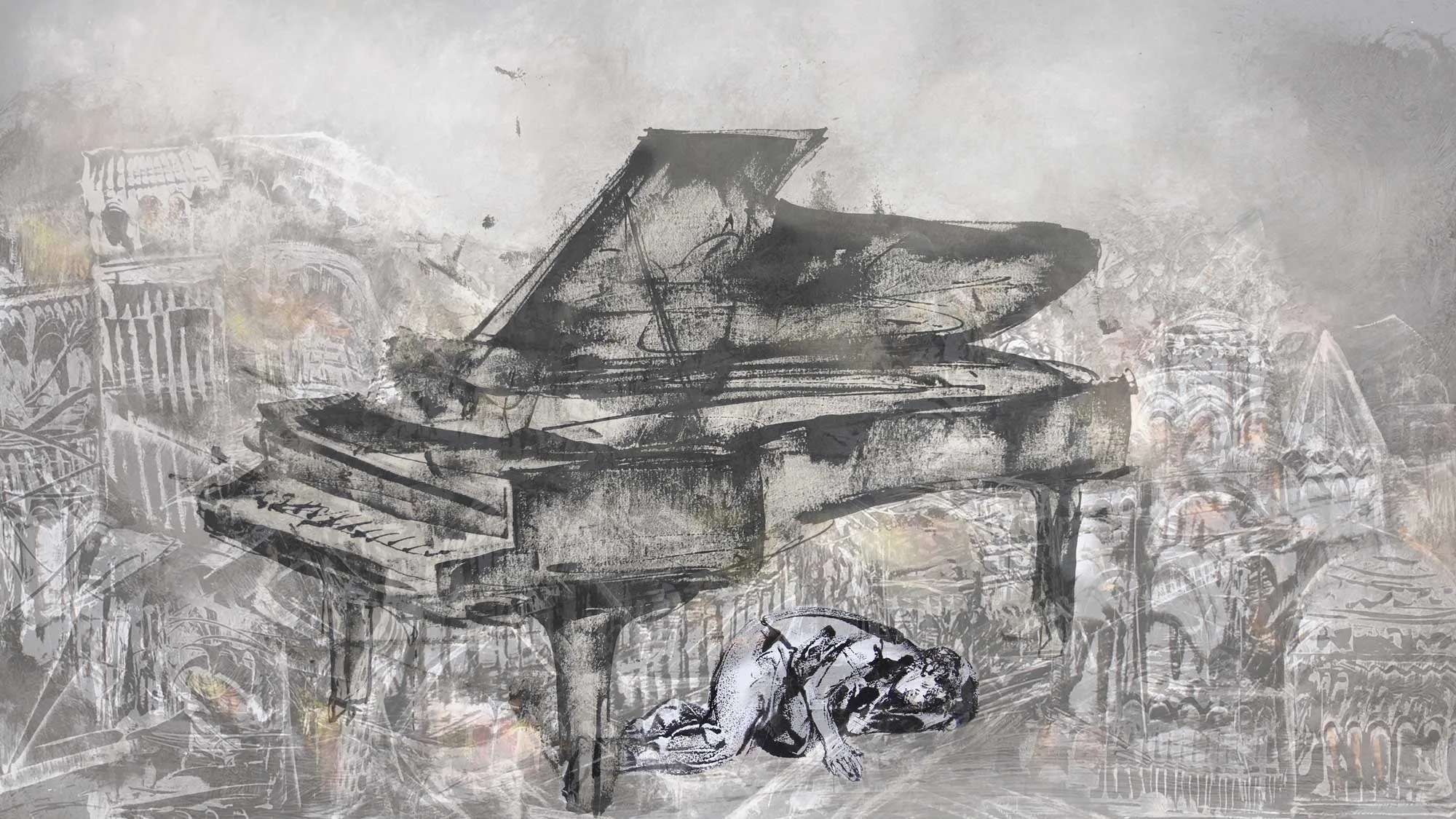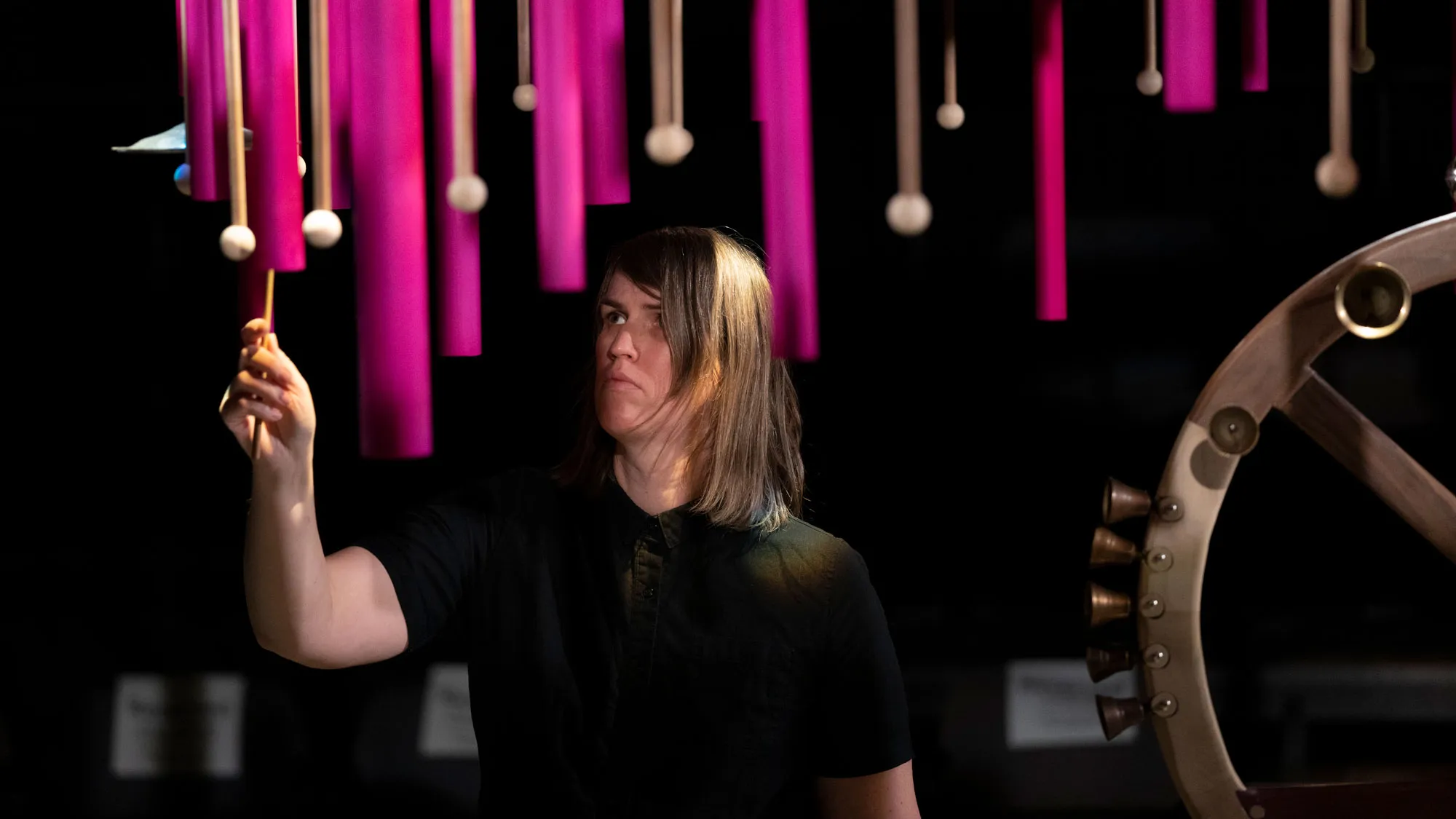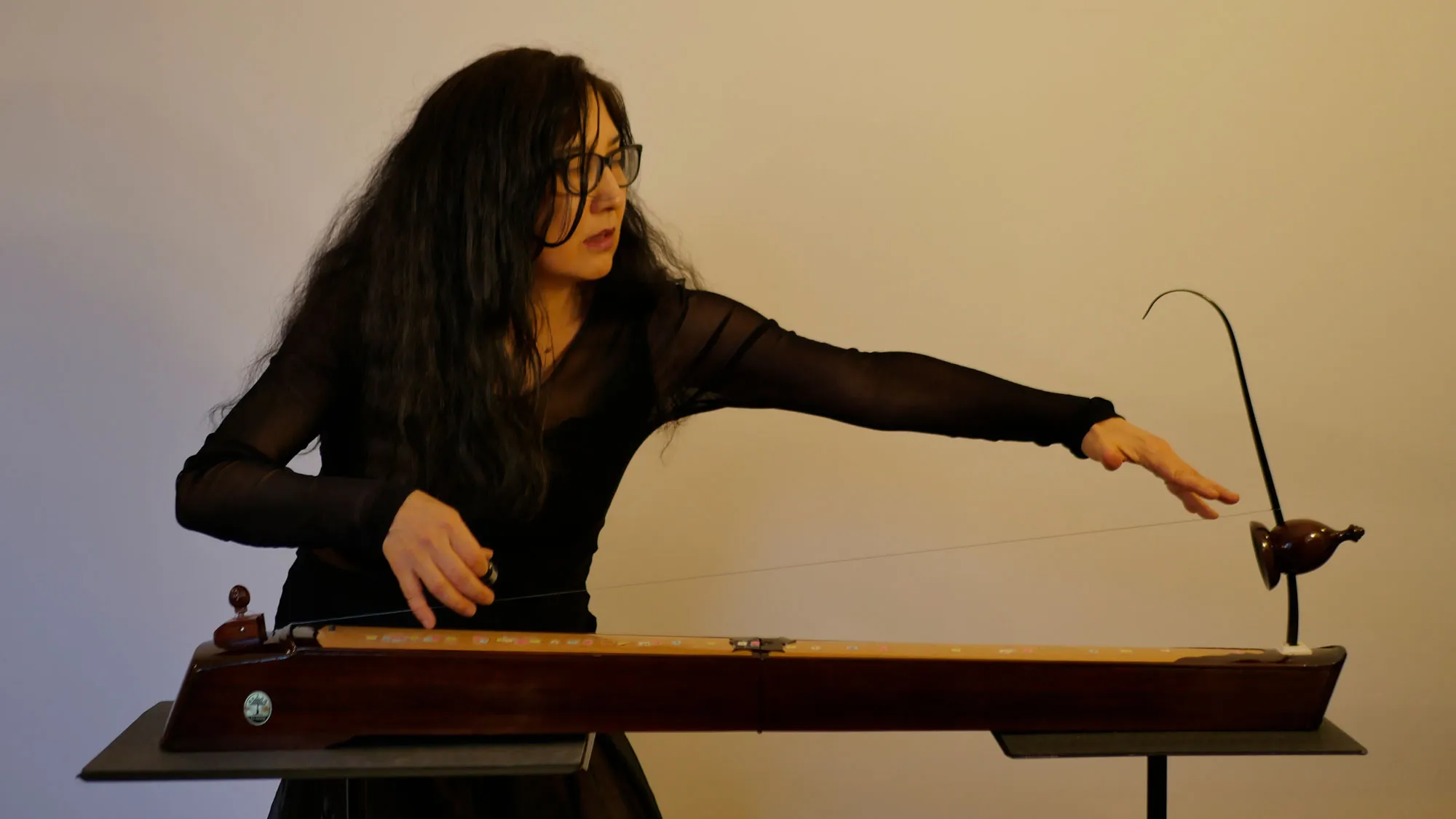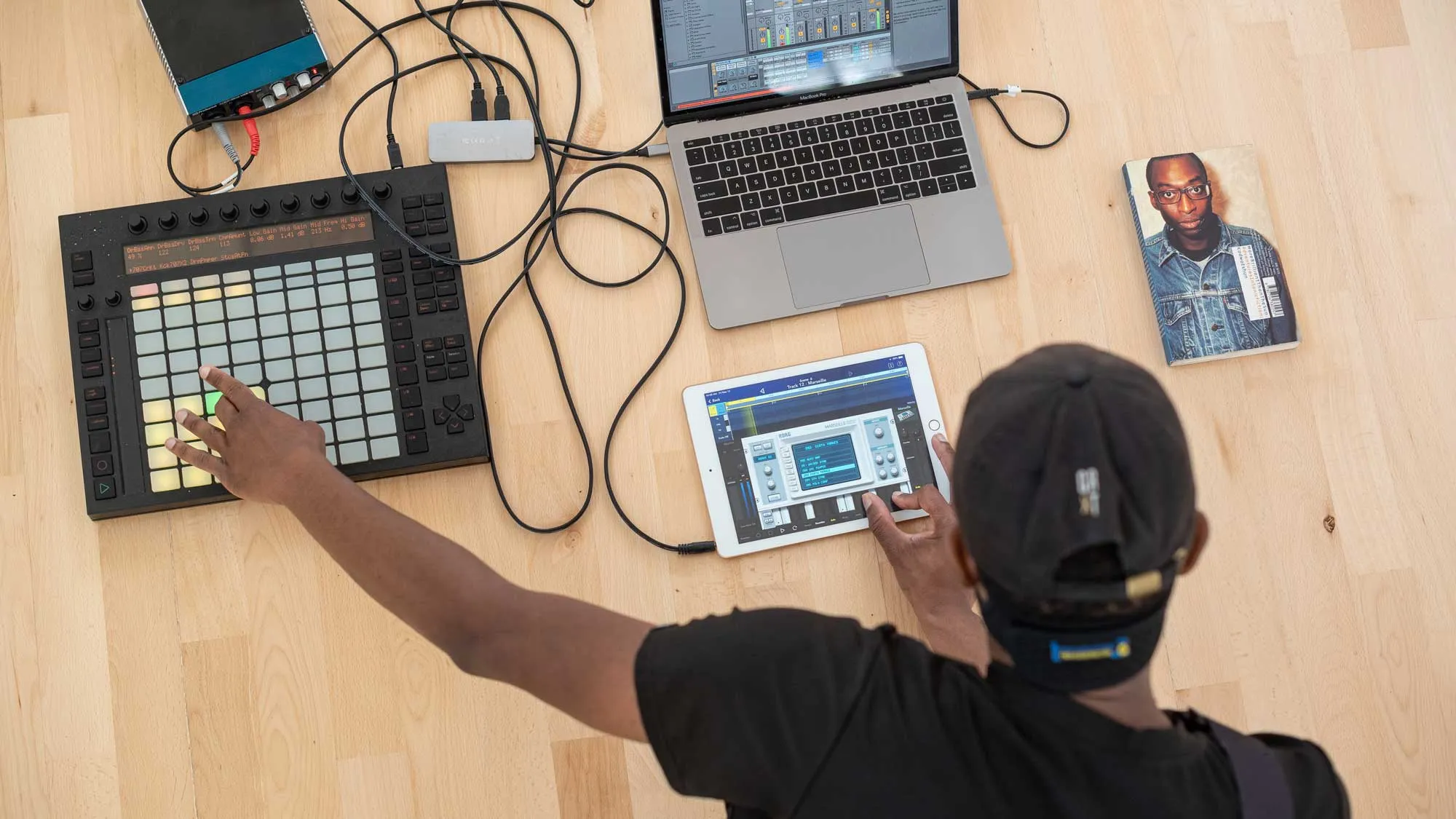
Speakers That Speak To You
Speakers that Speak To You is a newly-commissioned work by DeForrest Brown Jr., which traces the trajectory of techno’s machine-like aspects and its connection to embodied dance and live music histories. Considering the genre’s origins by activating the spatial qualities of sound, Brown extends his musical and theoretical practice through the advanced sonic infrastructure of EMPAC’s Studio 1—Goodman.
The project opens up to the implicit origins of techno that Brown traced in his book, Assembling a Black Counter-Culture (2021), wherein he has historicized techno as a genre rooted in a powerful political and cultural force that emerged within underground architectures and industrial spaces in Detroit. Brown's exposure to early Afrofuturist and jazz musicians, Black southern marching band compositions, and second-wave techno producers of the 1990s led to the development of his Black radical politics within the techno genre. The project will engage with recordings from the artist’s new album Techxodus, which operates as a musical successor to the ideas in his recent publication. Additionally, Brown plans to spend the next year developing tracks and performances around his notion of a “free-jazz”-inspired take on techno. With this new piece, Brown continues his research by reactivating cultural soundscapes and critically mapping the sounds of techno through the mode of a listening session.
DeForrest Brown Jr. is producing Speakers That Speak To You in residence at EMPAC with curators Katherine Adams, Liv Cuniberti, Mary Fellios, Abel González Fernández, Sidney Pettice, second year graduate students from the Center for Curatorial Studies at Bard College.
Main Image: Frantz Photography, Courtesy the Artist.
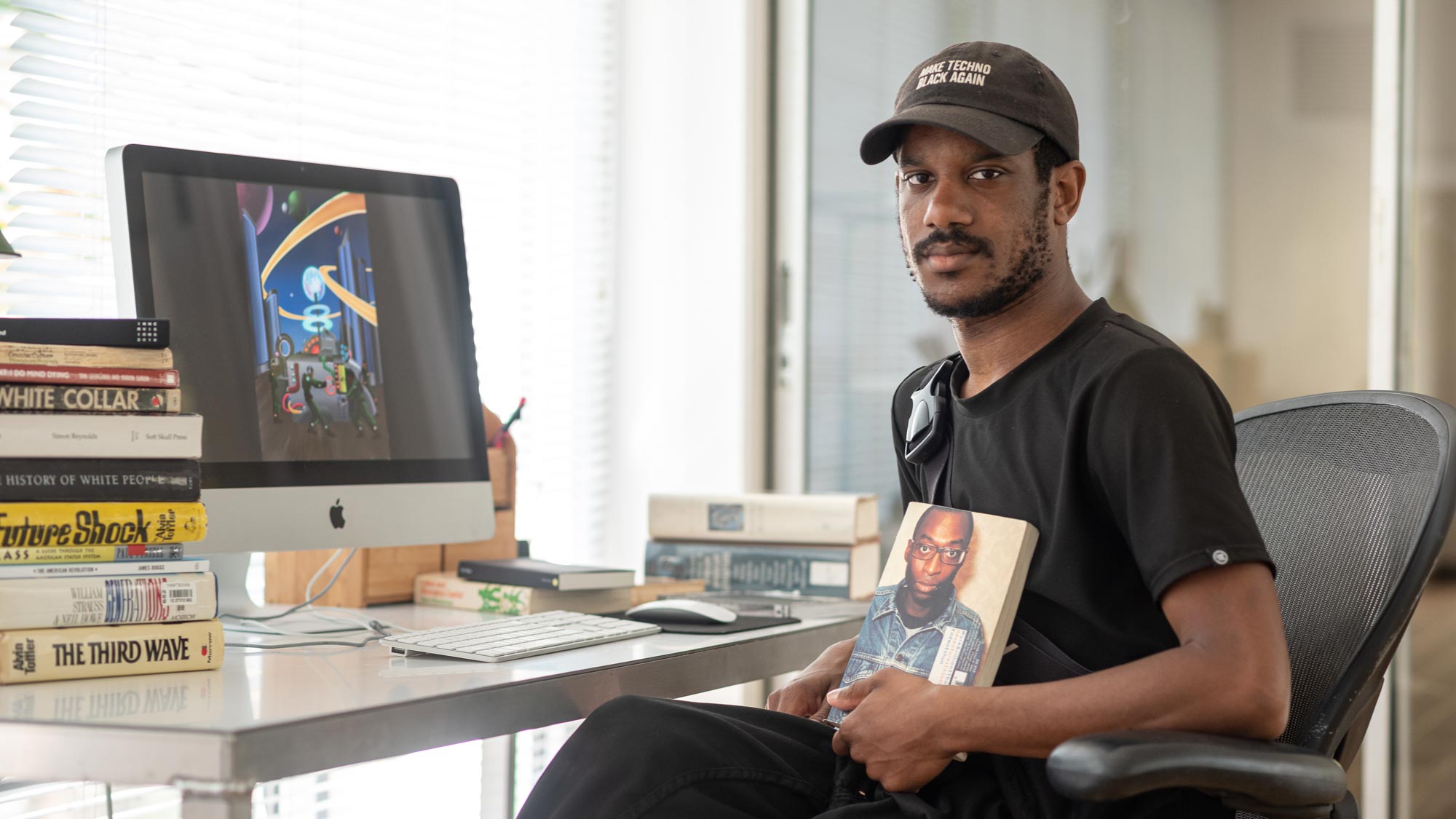
Frantz Photography, Courtesy the Artist.
Kamau Patton presents new and evolving sonic transmissions. Speaker Music (AKA DeForrest Brown Jr.) presents new music and a talk that follows the release of his book Assembling a Black Counter-Culture.

